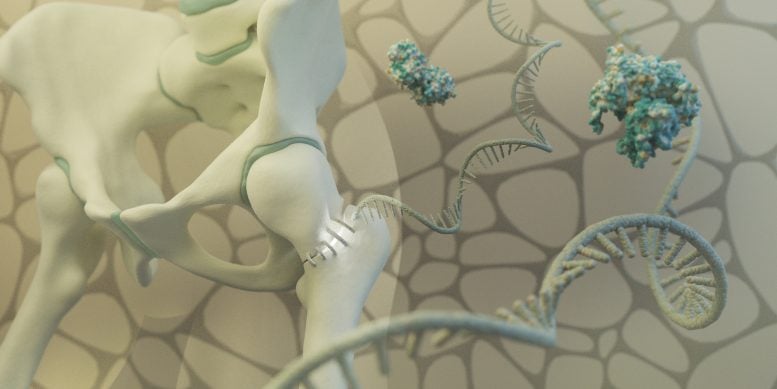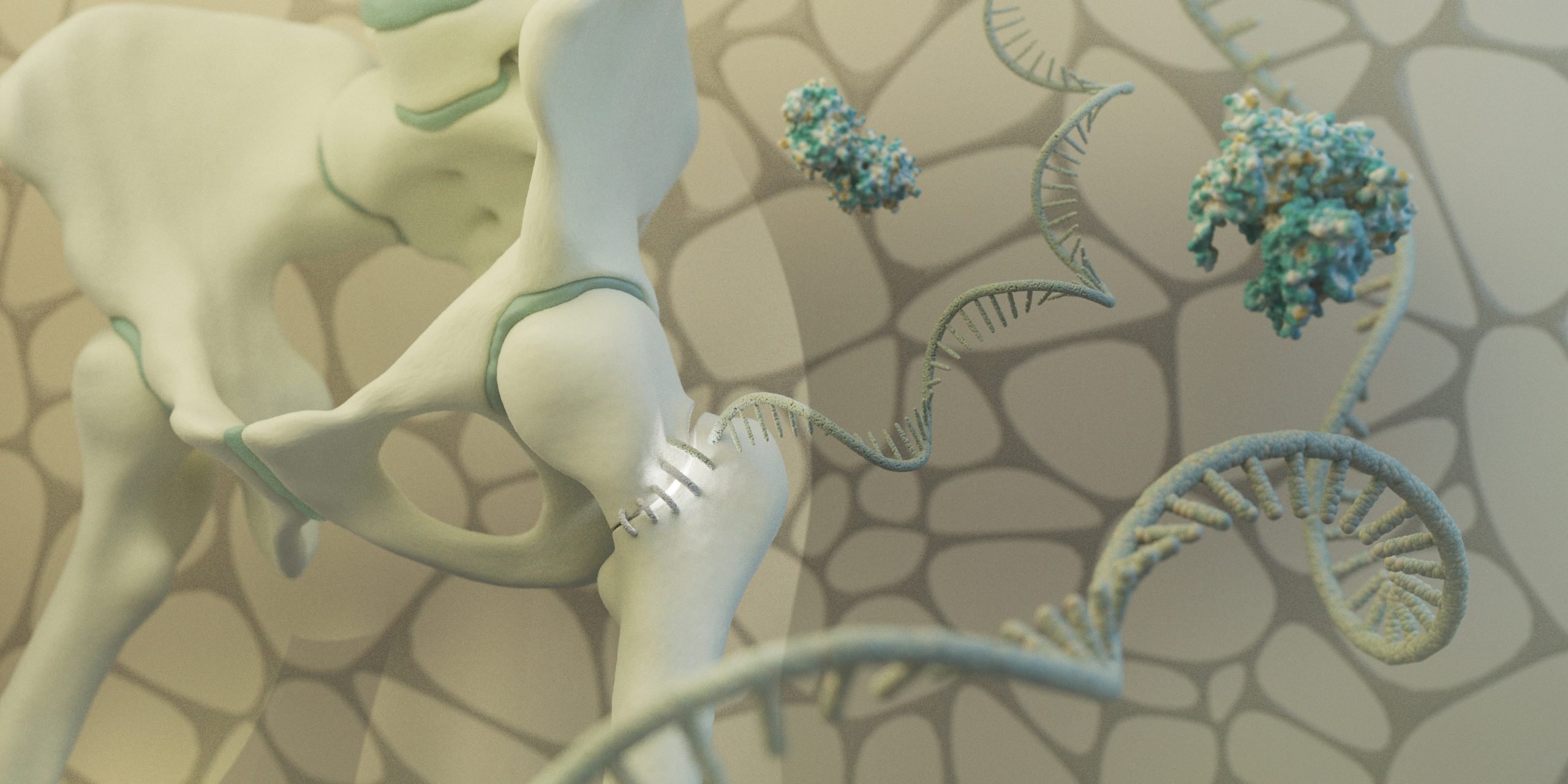
Researchers at KAUST have shown that LINE-1 RNAa transposable element in the human genome, plays a crucial role in bone repair. This breakthrough, which challenges the old view that such elements are “junk”, DNA‘ offers new ways to treat osteoporosis and other diseases.
Approximately half of the human genome is made up of DNA fragments derived from ancient viruses. These fragments, known as “transposable elements” (TEs), are now known for their role in regulating gene expression and their role in disease development. Recently, an international research team led by scientists at KAUST discovered that a particular transposable element, LINE-1 RNA, plays a positive role in promoting bone repair, offering potential applications in the treatment of osteoporosis and other diseases.
“Previously, scientists referred to TEs as ‘junk DNA’ and thought they were irrelevant or even harmful,” says KAUST researcher Arianna Mangiavacchi, who worked on the study with faculty member Valerio Orlando and colleagues. “Now, however, many positive roles of TEs are being uncovered and our work on bone repair contributes to new knowledge in this field.”
Research results and experiments
Mangiavacchi and Orlando’s research focuses on aging processes and how the body responds to environmental stressors over time. Scientists know that TE levels increase with age, but their role in tissue health is not well understood. Previous work by Mangiavacchi and his colleagues suggested a link between LINE-1 RNA activity and bone health, so the team sought to review the underlying mechanisms.
First, the team conducted sequencing experiments on mice with bone fractures and found that TEs, particularly LINE-1 RNA, were upregulated for a short period of time after the fracture.
“Further studies showed that LINE-1 RNA activated a program of carefully regulated inflammation, which in turn induced a specific signaling pathway to repair the fracture,” says Mangiavacchi.
Use in osteoporosis
The researchers then examined TEs in bone cells (osteoblasts) from postmenopausal women with osteoporosis and a healthy control group. TEs, particularly LINEs, were highly upregulated in healthy femurs with high bone density, while those with lower bone density and osteoporosis had low LINE expression.
“We added synthetic LINE-1 RNA to these cell cultures and the results were surprisingly clear,” says Mangiavacchi. “Osteoblasts treated with LINE-1 RNA showed a characteristic phenotype in which bone matrix formed abundantly and rapidly. Crucially, cells from osteoporotic patients could be rescued by LINE-1 RNA treatment.”
“It appears that the human body uses viral TEs to trigger an inflammatory response to damage, stimulating the innate immune system to repair bone and tissue. The so-called ‘dark side’ of TEs was intentionally included in our genome to help us adapt and become more resilient,” says Orlando.
This discovery is protected by two patents, one of which is licensed to the California biotechnology company Altos Labs, the other to the start-up company RepeatEra, founded by Orlando and Mangiavacchi to advance their pro-regenerative therapy into clinical trials.
“We believe this mechanism is not limited to bone, and therefore therapies based on synthetic LINE-1 RNA could have many applications, from corneal repair to skin-protecting cosmetics,” says Mangiavacchi. “We look forward to further expanding on these findings and understanding how TEs affect other cell types.”
Reference: “LINE-1 RNA triggers matrix formation in bone cells via a PKR-mediated inflammatory response” by Arianna Mangiavacchi, Gabriele Morelli, Sjur Reppe, Alfonso Saera-Vila, Peng Liu, Benjamin Eggerschwiler, Huoming Zhang, Dalila Bensaddek, Elisa A Casanova, Carolina Medina Gomez, Vid Prijatelj, Francesco Della Valle, Nazerke Atinbayeva, Juan Carlos Izpisua Belmonte, Fernando Rivadeneira, Paolo Cinelli, Kaare Morten Gautvik and Valerio Orlando, 1 July 2024, The EMBO Journal.
DOI: 10.1038/s44318-024-00143-z

